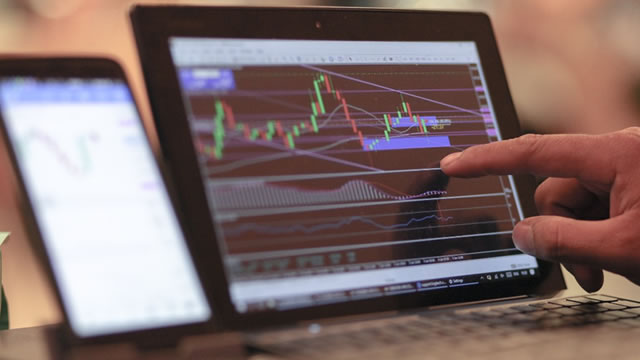- The Indian Rupee extends its decline in Thursday’s early European session.
- Rising bets of RBI rate cuts and risk aversion continue to undermine the INR.
- The RBI interest rate decision and the US January employment report will be in the spotlight on Friday.
The Indian Rupee (INR) extends its downside on Thursday. The local currency remains under selling pressure amid the expectation that the Reserve Bank of India (RBI) might cut the interest rates on Friday. Additionally, global trade war concerns fuelled risk aversion among investors, weighing on the INR.
Nonetheless, the foreign exchange intervention by the RBI and a decline in crude oil prices might help limit the Indian Rupee’s losses. Later on Thursday, the US weekly Initial Jobless Claims, Unit Labor Costs and Nonfarm Productivity will be released. The attention will shift to the RBI interest rate decision and the US January employment data on Friday.
Indian Rupee slumps as India’s new RBI Governor is set to begin rate cuts
- The RBI is likely conducting buy/sell USD-INR swaps, pushing forward premiums lower, according to traders.
- USD/INR 1-year forward implied yield retreats from the day’s high, last at 2.19%.
- Most of the economists surveyed by Bloomberg anticipate the Indian central bank to lower the benchmark repurchase rate by at least 25 basis points (bps) to 6.25% on Friday.
- HSBC India Composite PMI came in at 57.7 in January. This figure came in weaker than the previous reading and the estimation of 57.9.
- HSBC India Services PMI eased to a two-year low of 56.5 in January versus 56.8 prior, lower than expected.
- “India’s services sector lost growth momentum in January, although the PMI remained well above the 50-break-even level. The business activity and new business PMI indices eased to their lowest levels since November 2022 and November 2023, respectively,” said Pranjul Bhandari, Chief India Economist at HSBC.
- The US Services PMI eased to 52.8 in January from 54.0 (revised from 54.1) in December, according to the Institute for Supply Management (ISM) on Wednesday. This reading came in below the market consensus of 54.3.
- Fed Vice Chair Philip Jefferson said on Thursday that he is happy to keep the Fed Funds on hold at the current level, adding that he will wait to see the net effect of Trump policies.
USD/INR maintains its positive trend
The Indian Rupee trades in negative territory on the day. The bullish view of the USD/INR pair prevails, characterized by the price holding above the key 100-day Exponential Moving Average (EMA). However, further consolidation cannot be ruled out before positioning for any near-term USD/INR appreciation as the 14-day Relative Strength Index (RSI) moves beyond the 70.00 mark.
The first upside barrier for USD/INR emerges at 87.49, an all-time high. Bullish candlesticks and buying pressure above this level might attract the pair to the 88.00 psychological level.
On the other hand, the 87.05-87.00 area acts as an initial support level for the pair, representing the low of February 5 and the round mark. More bearish candles or consistent trading below the mentioned level, the bears could take control and drag USD/INR down to 86.51, the low of February 3.
Indian economy FAQs
The Indian economy has averaged a growth rate of 6.13% between 2006 and 2023, which makes it one of the fastest growing in the world. India’s high growth has attracted a lot of foreign investment. This includes Foreign Direct Investment (FDI) into physical projects and Foreign Indirect Investment (FII) by foreign funds into Indian financial markets. The greater the level of investment, the higher the demand for the Rupee (INR). Fluctuations in Dollar-demand from Indian importers also impact INR.
India has to import a great deal of its Oil and gasoline so the price of Oil can have a direct impact on the Rupee. Oil is mostly traded in US Dollars (USD) on international markets so if the price of Oil rises, aggregate demand for USD increases and Indian importers have to sell more Rupees to meet that demand, which is depreciative for the Rupee.
Inflation has a complex effect on the Rupee. Ultimately it indicates an increase in money supply which reduces the Rupee’s overall value. Yet if it rises above the Reserve Bank of India’s (RBI) 4% target, the RBI will raise interest rates to bring it down by reducing credit. Higher interest rates, especially real rates (the difference between interest rates and inflation) strengthen the Rupee. They make India a more profitable place for international investors to park their money. A fall in inflation can be supportive of the Rupee. At the same time lower interest rates can have a depreciatory effect on the Rupee.
India has run a trade deficit for most of its recent history, indicating its imports outweigh its exports. Since the majority of international trade takes place in US Dollars, there are times – due to seasonal demand or order glut – where the high volume of imports leads to significant US Dollar- demand. During these periods the Rupee can weaken as it is heavily sold to meet the demand for Dollars. When markets experience increased volatility, the demand for US Dollars can also shoot up with a similarly negative effect on the Rupee.
Financial Market Newsflash
No financial news published today. Check back later.










